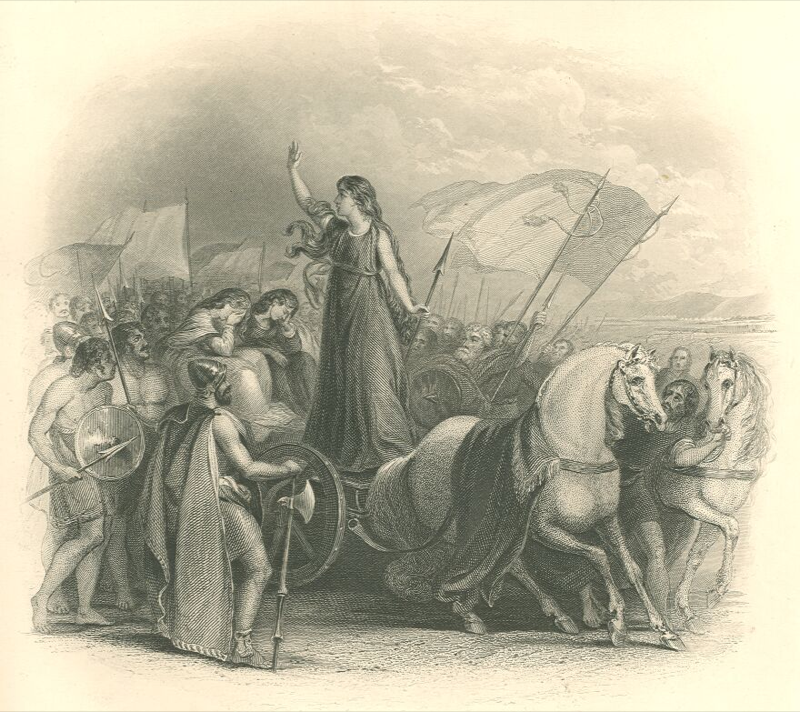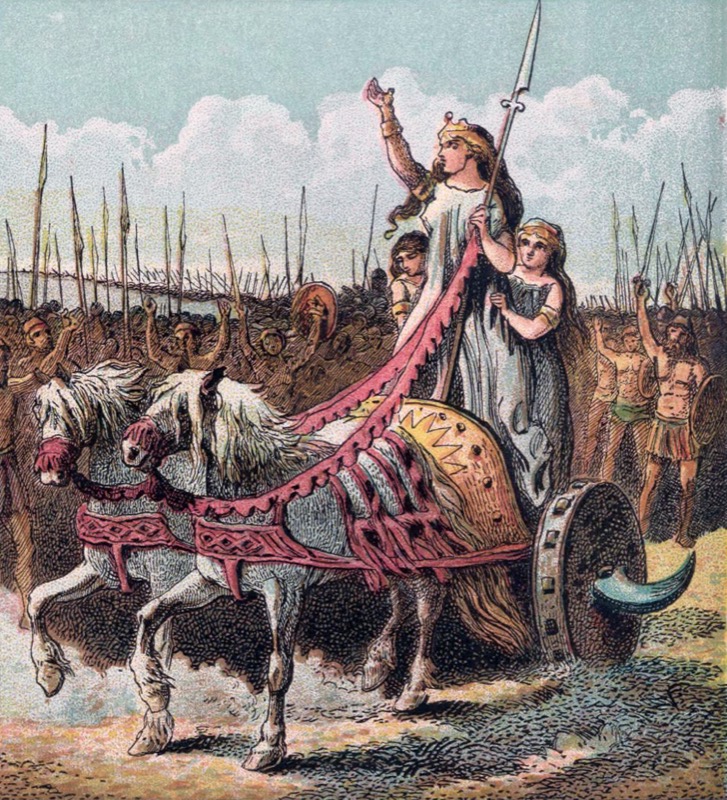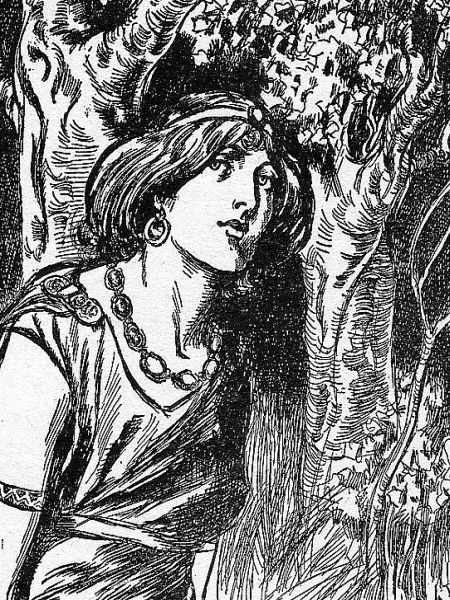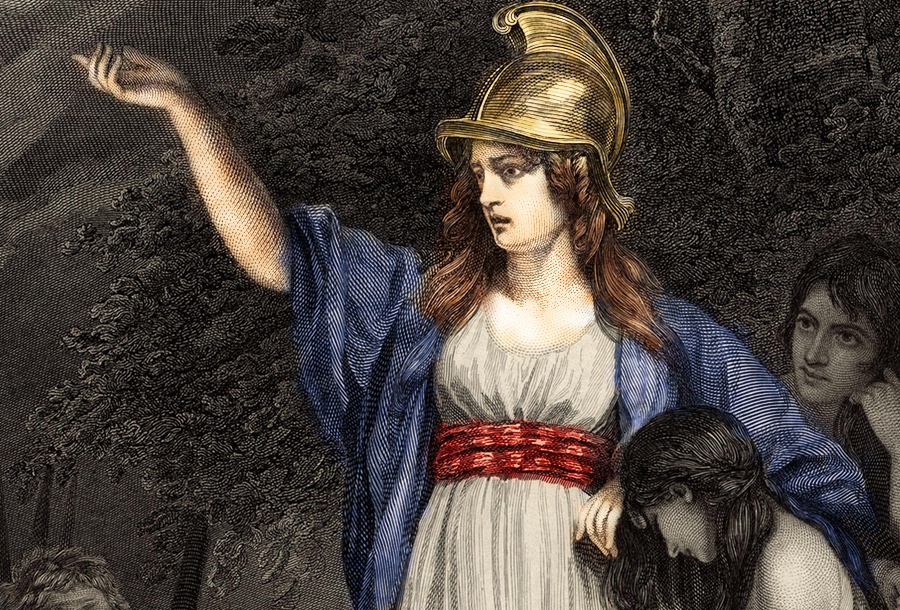In the single-minded pursuit of vengeance, the warrior queen of the Iceni massacred thousands of Romans and almost caused the empire to abandon Britannia entirely
Subscribe to All About History now for amazing savings!
While Boudica of the Iceni was still mourning the death of her husband Prasutagus, a horde of Roman agents forced their way into her home. The armed men seized the Celtic queen, along with her two daughters, and dragged them all into public view. There, before the eyes of her people, Boudica was brutally flogged as if she were a slave and her two virgin daughters raped. When the violence was over, the Romans continued their acts of cruelty on the Iceni by confiscating the land of their chief nobles. Furious at their actions, the queen quickly gathered her people. She would stop at nothing until she had her revenge against the Roman Empire.
The Roman commanders gave the orders for these acts in 60 CE after they received the will of recently deceased King Prasutagus. To show his loyalty to Rome, the British ruler left half of his kingdom to the emperor, but bequeathed the other half to his daughters – an act of love that would backfire in ways he could never have imagined. According to Roman law, contracts with client kings terminated upon their death, and thus turn all of the possessions of the kingdom into Roman property. Usually, this transition from a native monarchy to Roman rule was carried out with far less brutality, in the hope of gaining the loyalty and allegiance of the newly conquered people. Yet the Romans were greatly insulted, not just because Prasutagus presumed to think he could leave such a large portion of his kingdom to his heirs – the shocking reaction to his will was mostly because these heirs were women. While powerful women were relatively common among the Britons, female rulers were an absurd concept in the patriarchal society of Rome. And the Romans would make their feelings about this very clear.
It did not take long for thousands of aggrieved Britons to hear of the uprising of the Iceni, as well as the atrocities committed on Boudica and her family. The Romans had only conquered Britannia less than 20 years before, during the reign of Emperor Claudius in 43 CE, and the oppressive treatment of their new subjects by imperial officials had created numerous rebels all over the island. For several years after the conquest, most insurgents became a part of the full-fledged guerrilla war led by Caratacus, king of the Catuvellauni. After the decisive victories of the Romans over his forces during the invasion, the king learned not to face the legions on the battlefield, instead using his superior knowledge of the local terrain to carry out successful guerrilla tactics on the foreign army.
Though the Iceni officially became allies of the Roman Empire after the conquest, a faction of the Iceni also participated in a minor revolt in 48 CE, when the governor Publius Ostorius Scapula enacted a draconian measure to discourage Britons from joining Caratacus. The governor had his men force their way into the homes of the Iceni and confiscated all weapons. However, when the Iceni insurgents revolted with warriors from the neighbouring Catuvellauni and Coritani, they had no chance against the Roman army. Scapula quickly crushed the rebel forces when he stormed the Iceni hill fort they fought from and slaughtered all of the rebels.
The Iceni had more than enough cause to rally behind their queen, but the main reason Britons from other tribes flocked to swell her ranks was that they no longer had any major rebel army to join. In 51 CE, Scapula continued his campaign to quell the unrest throughout the island by targeting its source, Caratacus. And once the rebel king was forced to meet the Roman army in pitched battle, the governor defeated him. Caratacus then fled to the court of Cartimandua, queen of the Brigantes, to seek refuge. Yet instead of aiding a fellow British ruler, the queen betrayed her tribal rival to the Romans, gaining much trust from her overlords but losing the respect of many of her people. Among those who had fallen out of favour with her was Venutius, her husband.

After Cartimandua divorced him in 57 CE, he attempted to seize her kingdom from her but was thwarted by the Roman forces that came to the aid of their client queen. Although he would later become the next great rebel leader, Venutius would not make another move until more than a decade later and remained in hiding during the Boudican rebellion.
Unable to join the forces of Caratacus or Venutius, many discontent Britons who still wished to make a stand against the empire continued to increase Boudica’s forces as she led them south into the lands of the Trinovantes. Like the Iceni, the Trinovantes harboured deep resentment towards the Romans for the past decade, and so became the second major tribe to join the revolt. While warriors from tribes all over Britannia rallied to the movement, none of the tribes contributed as much manpower as the Iceni and the Trinovantes. Both tribes were so invested in the cause that their warriors were followed by an enormous trail of carts driven by their families and loaded with their possessions. To restore their people’s honour, the Iceni and the Trinovantes were willing to risk everything.
Including the women, children and elderly who accompanied the march, the British horde may have increased to well over 100,000 people, with a core of warriors that was tens of thousands strong. Confident of overwhelming any meagre force the Romans sent against her, Boudica led her army towards their first target – the colonia of Camulodunum. The town was not only the most obvious choice for the rebels to attack, as it was in line to become the capital of the province, but its destruction was also the main reason the Trinovantes joined the revolt. It was imperative the colony was burned to the ground.
Camulodunum was once the capital of the Trinovantes until the Romans established it as a colonia for retired veterans in 50 CE. Arable land was also required for the farms of the soldiers, so it was taken from members of the tribe. As some of the strongest supporters of the Romans, the nobles of the Trinovantes were ‘rewarded’ even further for their loyalty with membership into the priesthood of the Augustales. As priests dedicated to the worship of the deified emperors, it was the duty of the Augustales to build the grand temple of Claudius within their former capital. To pay for the temple and the construction required to transform Camulodunum into a colonia, the Trinovantes were given considerable loans by both the Roman state and the fabulously wealthy statesman Seneca. However, the top financial officer, or procurator, of the province, Catus Decianus, had recently demanded that all loans given to the tribe were to be paid back in full immediately, or the funds would be taken by force. After enduring excessive taxation and then given such an ultimatum, the Trinovantes decided that their support for the empire had come to an end.
When the Roman citizens of Camulodunum became aware of the approaching horde led by Boudica, they desperately pleaded for help to the procurator in nearby Londinium. Since the governor, Gaius Suetonius Paulinus, was leading a campaign in the far west of the province, Decianus was the second highest-ranking Roman official in the vicinity. But the procurator was not a military commander and, therefore, was only able to send little more than 200 ill-equipped men to reinforce the small garrison already stationed in the town. Shortly afterwards, the financial official fled to Gaul in disgrace for his approval of the severe maltreatment of the Iceni and Trinovantes that led to the rebellion. What the citizens of Camulodunum did not know was that the ninth legion, led by Quintus Petillius Cerialis, was already on its way to save the town before Boudica was able to reach it. In the hope of intercepting the rebel horde, Cerialis rushed towards their presumed location. The Roman commander moved with too much haste, for he and his men were unable to detect the trap they had walked into before it was too late. Suddenly, British warriors appeared from all directions and an onslaught ensued. Of the 2,000 soldiers under his command, only 500 made it out of the devastating ambush alive with Cerialis. Boudica continued on her course to Camulodunum as the beaten legion fled to the safety of a small fort.

With no solid defences constructed yet to protect the growing colonia, the citizens of Camulodunum watched in horror as Boudica led her army into the town, unopposed, and ordered the destruction of everything in sight. Dozens of buildings were set on fire and thousands of people were slaughtered in the streets. Boudica did not intend on taking prisoners, nor did her warriors, so any Roman caught by the armed mob was killed. The Roman soldiers and the rest of the survivors barricaded themselves within the massive temple of Claudius, but the desperately outnumbered force was completely surrounded. Amid the black smoke filling the sky and reek of decaying flesh surrounding the edifice, the defenders held off the British horde for two long days. But, by the end of the second day, the besiegers finally broke through the remaining barricades and massacred all who remained within the despised temple.
Boudica and her men pillaged as many spoils as they could find in the ruins of Camulodunum before they moved on towards the merchant town of Londinium. This time around, the citizens were aware of the advancing army, with ample time to allow them to gather their possessions and abandon the town. Yet hope was with the Romans, for Governor Paulinus had arrived with a small contingent of cavalry to survey the situation. Soon afterwards, however, optimism gave way to feelings of horror as the citizens of Londinium realized that Paulinus planned to retreat from the city and leave it open to the British marauders.
In order to reach the town as quickly as possible, the governor had been forced to travel ahead of the vast majority of his army. Since he was hopelessly outnumbered, Paulinus decided to reunite with his forces and meet Boudica in a place of his choosing, where her superior numbers would not be such an advantage.
Londinium was almost deserted by the time that Boudica reached the town, and any Roman left behind was slain and imperial buildings were destroyed. Unspeakable atrocities were also perpetrated on some of the aristocratic women caught in the town, possibly in revenge for the crimes committed against Boudica. After the Britons mutilated their breasts and faces, these unfortunate Roman noblewomen were executed by impalement on spikes. Once the destruction of Londinium was complete and sufficient booty gathered, the horde moved on to sack another smaller town, Verulamium, before it headed down the road now known as Watling Street towards the ultimate confrontation with the Roman army under Paulinus. In her wake, Boudica left a path of destruction that may have included the deaths of as many as 70,000 Romans and Romanised Britons.
The legionaries that Paulinus was forced to leave behind when he made his rapid trek east were returning from the successful invasion of the island of Mona, off the coast of Wales. As a major religious centre of the druids, Mona was perceived as a huge threat to the Romans, for the Celtic priests had long been the supporters of nearly every uprising against imperial rule across Gaul and Britannia. Therefore, when Paulinus became the governor of Britannia in 58 CE, he made it his top priority to crush all resistance on Mona and massacre all of the rebel priests found there. After their major triumph against the druids, the legionaries were highly motivated to eradicate the British insurgents of Boudica.

After the devastation of Verulamium, Boudica continued down Watling Street as Paulinus gathered his forces. With only Legion XX, some units from Legion XIV and auxiliaries, as well as the small remnant of Legion IX, Paulinus’ army only numbered about 10,000 soldiers. The governor would have had slightly more men at his disposal, but the commander of Legion II failed to muster his troops and combine with the forces of Paulinus. Boudica, on the other hand, led a horde of hundreds of thousands that may have consisted of as many as 230,000. But Paulinus had two advantages – the training and discipline of his men, and the fact that they were all battle-ready soldiers.
When Boudica finally reached the Romans in the Midlands, they were most likely positioned near Manduessedum. Paulinus had chosen an ideal location to assemble his men, with a thick forest behind them and slopes protecting their flanks. The legionaries formed the centre of the army with auxiliary units on each side and cavalry contingents on the wings. The warrior bands of Boudica’s massive host gathered before the Roman legions, brandishing their swords and screaming war cries as Boudica rode along the front lines in a chariot with her daughters. As her long hair flowed in the wind, the tall warrior queen raised her powerful voice above the tumult to give a rousing speech that reminded her troops of the cruelty and oppression they were fighting against. On the other side of the field, Paulinus also raised the confidence of his men through very direct words. He emphasised their extensive training, for them to see that their professionalism was a much greater asset than overwhelming numbers.
When the two forces collided at the battle of Watling Street, the chariots of the Britons wreaked havoc down the Roman lines. However, the large infantries of each army inevitably clashed and the superior equipment and martial skills of the Romans won the day. Furthermore, when the Britons broke and fled from the slaughter caused by the deadly Roman short swords, they were trapped by the semi-circle of carts and could not escape. In the end, everything in the path of the victorious legionaries was slain, including women, children and the pack animals travelling with the Britons.
In defeat, Boudica drank poison, choosing to end her own life rather than fall into the hands of the Romans. Although ultimately unsuccessful at removing the Romans from Britannia, Boudica had her revenge with the deaths of thousands of her imperial oppressors. In fact, so much devastation had occurred that Emperor Nero nearly gave up on the fragile fledgling province, for it was more costly to maintain than financially beneficial. He would have done so if it were not for the courageous efforts of Paulinus. Afterwards, the governor went on to continue the savagery of the Romans, focusing his brutality primarily on the remaining Iceni and Trinovantes until they were sufficiently subdued. Boudica may have achieved the vengeance she sought, but the sad truth is that her people faced even more oppression after her death because of her actions against the empire.
Originally published in All About History 24
Subscribe to All About History now for amazing savings!

